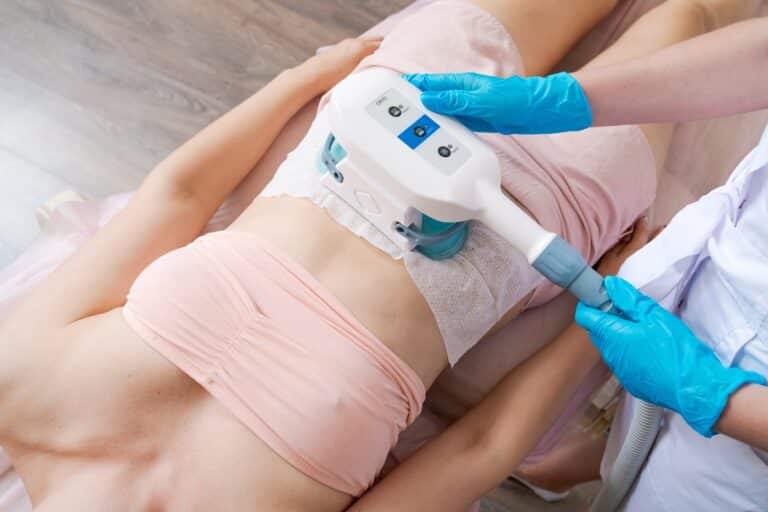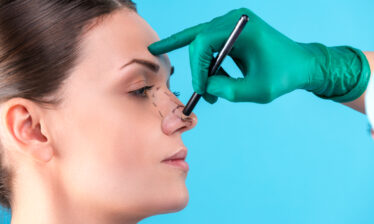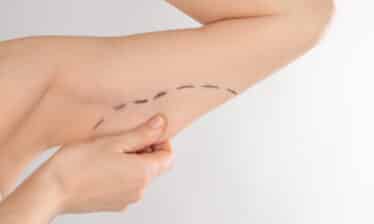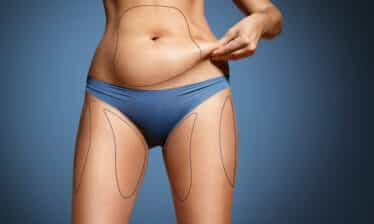Looking for a nonsurgical method to rid your body of fat cells with minimal risks and low downtime? CoolSculpting is a popular procedure worth considering that ticks all the checkboxes. But before you go ahead and book any procedure on speed dial, it’s important to gather detailed information about it. This way, you’ll know what to expect and how to prepare.
In this article, we cover everything you need to know about CoolSculpting — how it works, benefits, side effects, costs, and most importantly, who can opt for it.
What Is CoolSculpting?
CoolSculpting is the brand name for a type of fat reduction process called cryolipolysis.1 In cryolipolysis, freezing temperatures are used to break down fat cells in certain parts of the body.2 These are usually stubborn areas of localized fat stores or bulges that don’t shift despite maintaining a healthy diet and exercise regime.3
The procedure was approved by the United States Food and Drug Administration (FDA) in 2010 for treating fat deposits in the following parts of the body:4
- Under the chin and jaw areas
- Thighs
- Abdomen
- Flank (part of the body between the ribs and the hip)
- Upper back, including “bra rolls” and lower back
- Under the buttocks
- Upper arms
CoolSculpting: How It Works
A CoolSculpting procedure is carried out on an outpatient basis, which means you don’t have to be admitted for medical care. You can resume normal activities immediately after completing your session.5
The physician will first physically assess the fatty sections you’re concerned about and review your medical history before determining the course of treatment.6
The physician will apply a gel pack to protect the skin first. Then they will use a hand-held device to freeze the fat cells underneath the skin before suctioning the bulge out.7 Fat cells are more vulnerable to the technique, so the surrounding areas of tissues and skin are left unharmed.8 There is no surgery or needles involved in the procedure.9
An average CoolSculpting procedure can take anywhere from 35 to 60 minutes to complete, depending on the areas to be treated.10
After the treatment, the body naturally starts to eliminate the fat cells from the treatment site, so results can start to become visible in about four weeks. The best results will be visible in a period of one to three months after the procedure. It may take up to six months for some clients to see visible results.11
Clients can expect a fat reduction of up to 10% to 25% at the treatment site.12 Bear in mind that the results can vary from person to person.
Who Is CoolSculpting For? Who Should Avoid It?
Inform your physician of any health conditions you have so they can determine whether CoolSculpting will be safe for you. Mention any allergies and sensitivities you are aware of. Also, discuss any previous surgery and if you have a preexisting hernia.13 CoolSculpting can pose health risks if you’re pregnant or breastfeeding or if you have certain types of nerve disorders or skin conditions.14
Avoid CoolSculpting if you have any of the following medical conditions related to cold sensitivity:15
- Cryoglobulinemia
- Cold agglutinin disease
- Paroxysmal cold hemoglobinuria
- Raynaud’s phenomenon
- Cold urticaria
CoolSculpting isn’t used to help you lose weight. Your doctor may suggest it if, despite eating healthy and exercising, you aren’t able to get rid of fatty bulges in specific parts of your body.16
Although it has a high success rate, CoolSculpting works best on people who are within their ideal weight range. It does not offer skin-tightening benefits.17 Fat can develop again if you revert to an unhealthy lifestyle following the procedure.18
Side Effects and Risk Factors
CoolSculpting is generally a safe procedure with minimal risks.19
It’s normal to experience sensations like pulling, tugging, or mild punching at the treatment site during a procedure. You may also experience tingling, aching, stinging, cramping, and a feeling of intense cold at the treatment site.20
A minor percentage of clients (1%) may develop complications such as redness, bruising, swelling, pain, or increased sensitivity.21 Rarely, clients may develop a condition called paradoxical adipose hyperplasia (PAH), where the fat cells grow bigger instead of being eliminated.22
PAH can occur two to three months after the procedure. Research suggests it’s more likely to occur in patients who are male, are of Hispanic descent, had an abdominal procedure, or had a large device used during the procedure. PAH requires medical intervention in the form of liposuction or abdominoplasty (“tummy tuck”) to remove the additional skin and fat buildup.26
How Much Does CoolSculpting Cost?
CoolSculpting costs can vary depending on:23
- The size of the treatment area
- The number of sessions required
- Your location
- The skill of your treatment provider
The treatments can cost more if you want to treat a larger area like the flank as opposed to, say, under the chin. Expect to pay in the region of $2,000 to $4,000. Treatments to smaller areas like underneath the chin and jaw can cost in the region of $700 to $900.24
Before You Book a CoolSculpting Procedure
Consult your primary care physician before proceeding with CoolSculpting or any other procedure. Select a board-certified plastic or cosmetic surgeon or licensed skin health care professional to carry out your procedure.25
CoolSculpting is not for everyone. If you find out after research or consultation that you’re not an ideal candidate for CoolSculpting, refer to the My Body Treatment website for information on other possible alternatives and treatments you can consider.
CoolSculpting and other fat reduction treatments or weight loss procedures are not a cure for an unhealthy lifestyle. Eat a nutritious, well-balanced diet, eliminate risk factors, and follow a daily exercise regime to get the best results from this or any treatment protocol.
SOURCES:
- Medical News Today: “What to know about CoolSculpting.”
- Medical News Today: “What to know about CoolSculpting.”
- Cleveland Clinic: “Fat Freezing (Cryolipolysis).
- Cleveland Clinic: “Fat Freezing (Cryolipolysis).”
- Cleveland Clinic: “Fat Freezing (Cryolipolysis).”
- Cleveland Clinic: “Fat Freezing (Cryolipolysis).”
- Cleveland Clinic: “Fat Freezing (Cryolipolysis).”
- Medical News Today: “What to know about CoolSculpting.”
- WebMD: “CoolSculpting.”
- Medical News Today: “What to know about CoolSculpting.”
- CoolSculpting: “About CoolSculpting (PDF).”
- WebMD: “CoolSculpting.”
- “CoolSculpting.”
- Cleveland Clinic: “Fat Freezing (Cryolipolysis).”
- Cleveland Clinic: “Fat Freezing (Cryolipolysis).”
- WebMD: “CoolSculpting.”
- Medical News Today: “What to know about CoolSculpting.”
- Medical News Today: “What to know about CoolSculpting.”
- WebMD: “CoolSculpting.”
- “CoolSculpting.”
- Medical News Today: What to know about CoolSculpting.”
- Medical News Today: What to know about CoolSculpting.”
- WebMD: “CoolSculpting.”
- Medical News Today: “What to know about CoolSculpting.”
- Cleveland Clinic: “Fat Freezing (Cryolipolysis).
- WebMD: “CoolSculpting.”





